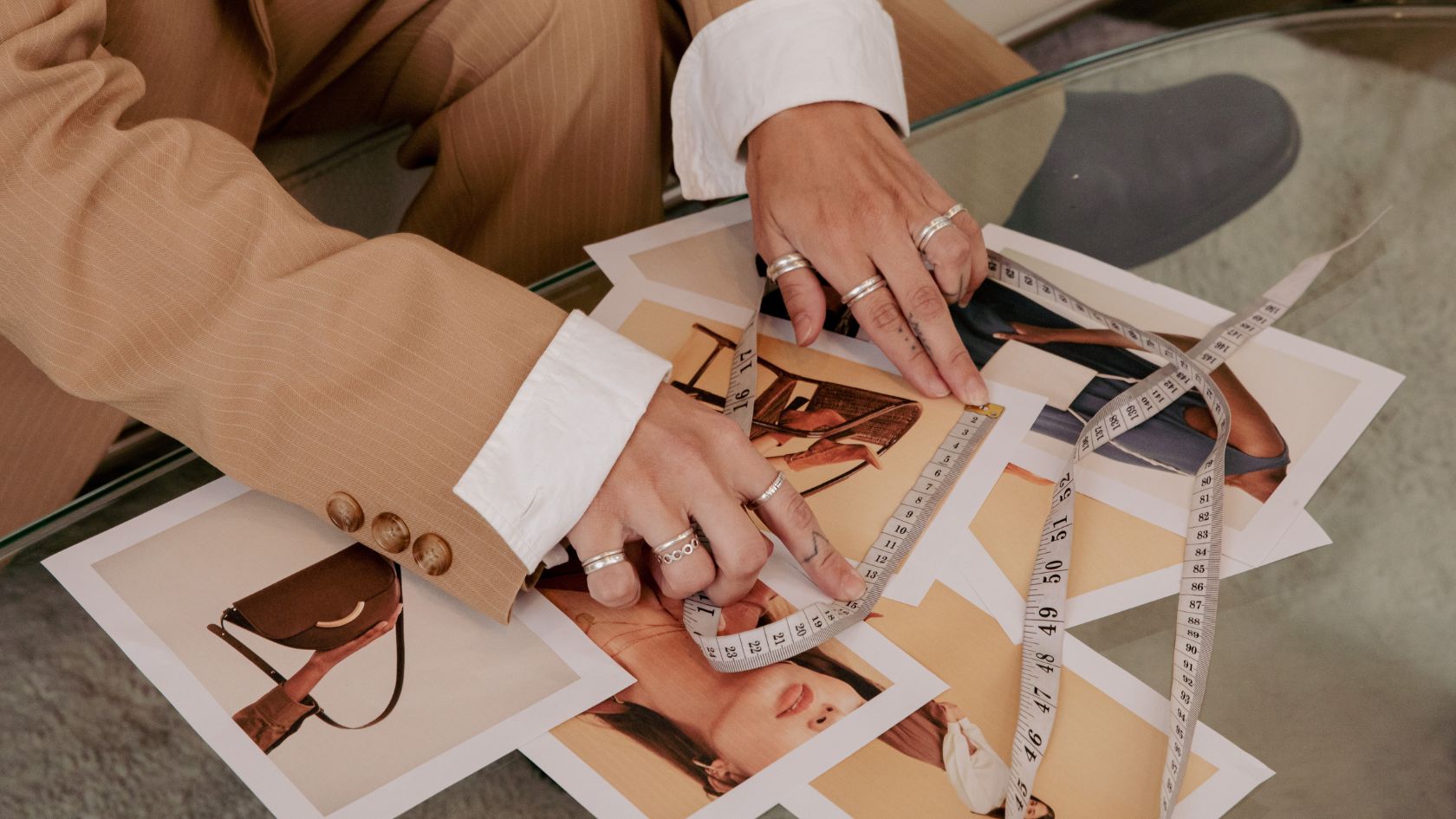
Top Fashion Design Programs: 15 Elite Institutions for Future Designers

Top fashion design programs provide aspiring designers with the education, skills, and industry connections needed to thrive in the competitive fashion industry. These prestigious institutions offer comprehensive curricula that blend creative design principles with practical business knowledge, preparing graduates for successful careers across various fashion sectors. This guide explores the world’s most renowned fashion programs, their unique strengths, admission requirements, and the career opportunities they unlock.
What Makes a Top-Tier Fashion Design Program?
The most prestigious fashion design programs share several key characteristics that set them apart from standard offerings. These elite institutions combine rigorous technical training with creative development, industry partnerships, and global perspectives. While tuition costs can be substantial, many students view these programs as investments that can yield significant returns through career advancement and networking opportunities, similar to how others might invest in passive income streams for long-term financial growth.
Key Elements of Elite Fashion Programs:
- Industry Connections – Partnerships with major fashion houses, designers, and retailers
- Distinguished Faculty – Instructors with significant industry experience and recognition
- State-of-the-Art Facilities – Professional-grade studios, equipment, and technology
- Global Perspective – International study opportunities and diverse student body
- Comprehensive Curriculum – Balance of creative, technical, and business education
- Portfolio Development – Structured guidance for creating professional-quality work
- Career Services – Internship placement, job search assistance, and alumni networks
15 Elite Fashion Design Programs Worldwide
1. Central Saint Martins (University of the Arts London)
London, UK4-Year BA ProgramHighly Competitive
Program Highlights: Widely regarded as the world’s premier fashion institution, Central Saint Martins has produced legendary designers including Alexander McQueen, Stella McCartney, and John Galliano. The program emphasizes experimental design approaches and conceptual thinking.
Admission Requirements: Outstanding portfolio demonstrating creative vision, personal interview, strong academic record, and evidence of fashion awareness and cultural engagement.
Notable Specializations: Womenswear, Menswear, Knitwear, Print, Fashion Journalism
2. Parsons School of Design (The New School)
New York, USA4-Year BFA ProgramAcceptance Rate: ~35%
Program Highlights: Located in the heart of New York’s fashion district, Parsons offers unparalleled industry access and a curriculum that balances artistic expression with commercial viability. Alumni include Tom Ford, Marc Jacobs, and Donna Karan.
Admission Requirements: Creative portfolio, personal statement, academic transcripts, and letters of recommendation.
Notable Specializations: Fashion Design, Fashion Marketing, Fashion Studies, Textiles
3. Fashion Institute of Technology (FIT)
New York, USA2-Year AAS + 2-Year BFAPublic Institution
Program Highlights: FIT offers exceptional value as a public institution while maintaining elite industry connections. The program is known for its practical, career-focused approach and comprehensive technical training.
Admission Requirements: Portfolio review, academic transcripts, and standardized test scores for some programs.
Notable Specializations: Fashion Design, Fashion Business Management, Textile Development, Accessories Design
4. Royal Academy of Fine Arts Antwerp
Antwerp, Belgium3-Year BA + 2-Year MAExtremely Selective
Program Highlights: Known for its avant-garde approach and artistic freedom, the Antwerp Academy gained international recognition through the “Antwerp Six” designers. The program emphasizes individual creative vision and conceptual development.
Admission Requirements: Rigorous entrance examination, exceptional portfolio, and interview process that tests creative thinking and technical skills.
Notable Specializations: Fashion Design with strong emphasis on artistic expression
5. Instituto Marangoni
Milan, Paris, London, Florence3-Year BA ProgramsMultiple Global Campuses
Program Highlights: With campuses in multiple fashion capitals, Marangoni offers a truly international perspective on fashion education. The curriculum emphasizes Italian craftsmanship and luxury brand development while incorporating e-commerce strategies and digital marketing techniques that are increasingly essential in today’s fashion landscape.
Admission Requirements: Portfolio review, academic qualifications, personal statement, and interview.
Notable Specializations: Fashion Design, Fashion Business, Fashion Styling, Fashion Marketing
Specialized Fashion Program Categories
Best Programs for Technical Excellence
- Bunka Fashion College (Tokyo, Japan) – Renowned for precision pattern-making and technical construction
- ESMOD (Paris, France) – Pioneer of the “French method” of fashion design and construction
- London College of Fashion – Exceptional technical facilities and specialized craft workshops
Best Programs for Business Focus
- Fashion Institute of Technology (Business Programs) – Industry-leading fashion merchandising and management
- LIM College (New York) – Specialized in the business side of fashion
- Institut Français de la Mode (Paris) – Strong emphasis on luxury brand management
Best Programs for Innovation & Technology
- Massachusetts Institute of Technology (MIT) – Fashion and technology integration
- Copenhagen School of Design and Technology – Sustainability and technological innovation
- Politecnico di Milano – Advanced textiles and materials research
Admission Strategies for Top Fashion Programs
Portfolio Development Tips:
- Show Range & Depth – Include diverse projects that demonstrate various skills and approaches
- Demonstrate Process – Include sketches, research, and development work, not just final pieces
- Technical Skills – Show evidence of pattern-making, sewing, and construction abilities
- Personal Voice – Develop a distinctive aesthetic that reflects your unique perspective
- Quality Presentation – Professional photography and organization of your work
Beyond the Portfolio: Holistic Application Strategies
Admission to elite fashion programs requires more than just creative talent. Successful applicants typically demonstrate:
- Industry Awareness – Knowledge of current fashion trends, designers, and business developments
- Cultural Literacy – Understanding of art, history, and cultural movements that influence fashion
- Technical Foundation – Basic sewing, pattern-making, and design skills
- Professional Experience – Internships, work experience, or personal projects in fashion
- Clear Career Vision – Articulated goals and understanding of the industry
Financial Considerations and ROI
Fashion education at elite institutions represents a significant investment, with annual tuition often ranging from $20,000 to $50,000. When evaluating programs, consider:
| Consideration | Questions to Ask |
|---|---|
| Scholarship Availability | What merit and need-based aid is offered? Are there industry-sponsored scholarships? |
| Career Placement Rates | What percentage of graduates secure relevant employment within 6-12 months? |
| Starting Salaries | What are the average starting salaries for recent graduates? |
| Industry Connections | Which companies recruit directly from the program? |
| Alumni Success | What positions do alumni hold 5-10 years after graduation? |
Career Pathways After Graduation
Elite fashion programs prepare graduates for diverse career paths beyond just becoming a designer:
- Fashion Design – Working for established brands or launching independent labels
- Technical Design – Pattern-making, sample development, and production management
- Fashion Merchandising – Buying, product development, and retail management
- Fashion Marketing – Brand management, public relations, and digital marketing
- Styling & Creative Direction – Editorial, celebrity, or commercial styling
- Textile Design – Creating prints, patterns, and innovative materials
- Fashion Technology – Developing wearable tech, sustainable materials, or fashion-tech platforms
- Fashion Education – Teaching and academic research
Emerging Trends in Fashion Education
The landscape of fashion education is evolving rapidly in response to industry changes:
- Sustainability Focus – Programs increasingly emphasize ethical and environmental practices
- Digital Integration – 3D design, virtual prototyping, and digital fashion are becoming core curriculum elements
- Entrepreneurship Training – More programs include business development and startup incubation
- Cross-Disciplinary Approaches – Collaboration with technology, science, and business departments
- Flexible Learning Models – Hybrid programs combining online and in-person instruction
- Industry Partnerships – Direct collaboration with brands on real-world projects
Conclusion: Choosing the Right Fashion Program for Your Career
Selecting among top fashion design programs requires careful consideration of your specific career goals, learning style, and financial resources. While prestigious institutions offer valuable credentials and connections, the most important factor is finding a program that aligns with your unique creative vision and professional aspirations.
Consider visiting campuses, speaking with current students and alumni, and thoroughly researching each program’s specific strengths. Remember that different institutions excel in different areas – from avant-garde conceptual design to commercial product development or digital fashion marketing.
Ultimately, your success in the fashion industry will depend on a combination of education, networking, portfolio development, and personal initiative. The right program can provide a strong foundation, but your passion, perseverance, and willingness to continuously evolve with the industry will determine your long-term success in this dynamic and rewarding field.